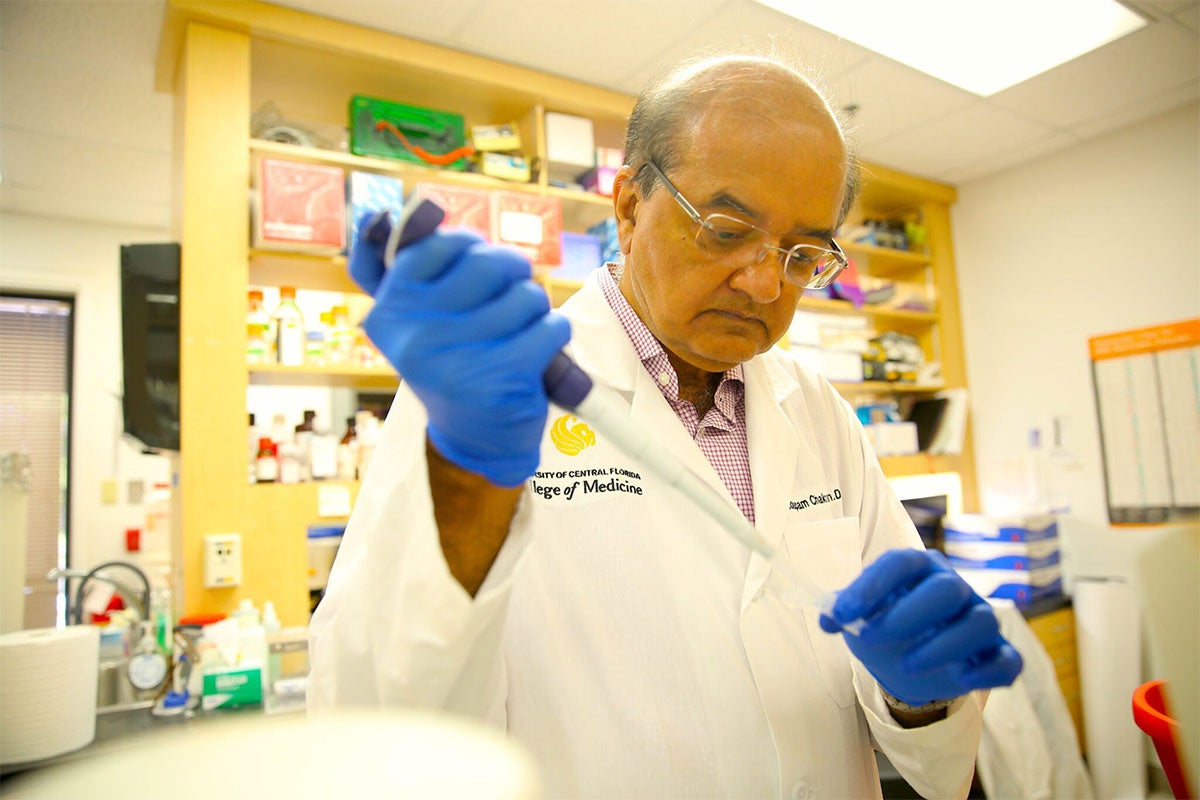Cancer-fighting drugs may be a powerful weapon in the battle against malaria — a parasitic infection spread by mosquitoes that kills more than half-million people per year worldwide.
Two UCF College of Medicine researchers are part of a multidisciplinary collaboration that was recently awarded a 5-year $3.8 million grant from the National Institutes of Health to investigate the use of cancer drugs to fight malaria.
UCF molecular parasitologist Debopam Chakrabarti and cancer molecular biologist Ratna Chakrabarti are partnering with Nathanael Gray, co-leader of the cancer therapeutics research program at Stanford University and Elizabeth Winzeler, a malaria drug development expert from the University of California San Diego. Together, they are working on identifying novel antimalarial drugs among compounds developed by Gray, a leading chemical biologist at the Stanford Cancer Institute who has developed several approved and clinical-stage drugs for cancer.
“We have so far identified a compound or chemical scaffold which has shown very potent therapeutic and preventative abilities in animal models,” says D. Chakrabarti, who is the principal investigator of the study. “Additionally, we have identified multiple compounds that are active against proteins which are essential for the parasite to proliferate and infect. One of those proteins is called PfPK6 — a protein that was previously discovered in our labs at UCF and is a promising target for malaria therapy.”
With funding from the NIH grant, the next phase of the study will examine the structure and functions of the compounds and their efficacy in killing malaria in the lab. UCF researchers will study the compounds’ killing rate at various stages of infection and whether the parasite develops a resistance to the treatments. The ultimate goal is to identify compounds that could be used in creating new drugs for treating malaria.
Repurposing cancer drugs for malaria is essentially a “piggyback approach,” says Chakrabarti, who has been researching malaria at UCF for over 25 years. “These scaffolds already have a long history of data on properties like safety, toxicity, pharmacology. So, if we find any of these compounds to be active against malaria, that would fast-track the process of getting the drug on the market. For drug development, a significant amount of time is usually spent on establishing the safety of the drug, so this will be a much faster process.”
New and more effective drugs for malaria are long overdue, Chakrabarti noted, with malaria deaths increasing significantly over the last few years. Prior to 2020, the Centers for Disease Control reported a yearly average of 400,000 deaths worldwide. But in 2020, an estimated 241 million cases of malaria occurred worldwide and 627,000 people died. About 80% of malaria deaths are children under age 5 in sub-Saharan Africa.
Chakrabarti says the increase is largely due to genetic mutations of the malaria parasite which makes it resistant to current drugs.
“For any infectious disease, the goal is to have a new class of drugs ready every five years to mitigate the challenges that emerge from drug resistance, but that hasn’t happened for malaria,” he says. “The current artemisinin-based therapy was discovered in the 1990s. So about 30 years have gone by since we have had a new class of compounds in the market against malaria.”
About 2,000 cases of malaria are diagnosed in the United States each year. The vast majority of cases in the United States are in travelers and immigrants returning from countries where malaria transmission occurs, many from sub-Saharan Africa and South Asia.
“This is why this research is so important,” Chakrabarti says. “It is a step in the right direction in the campaign to eliminate malaria globally and with this approach, we hope to have better drugs available sooner.”




